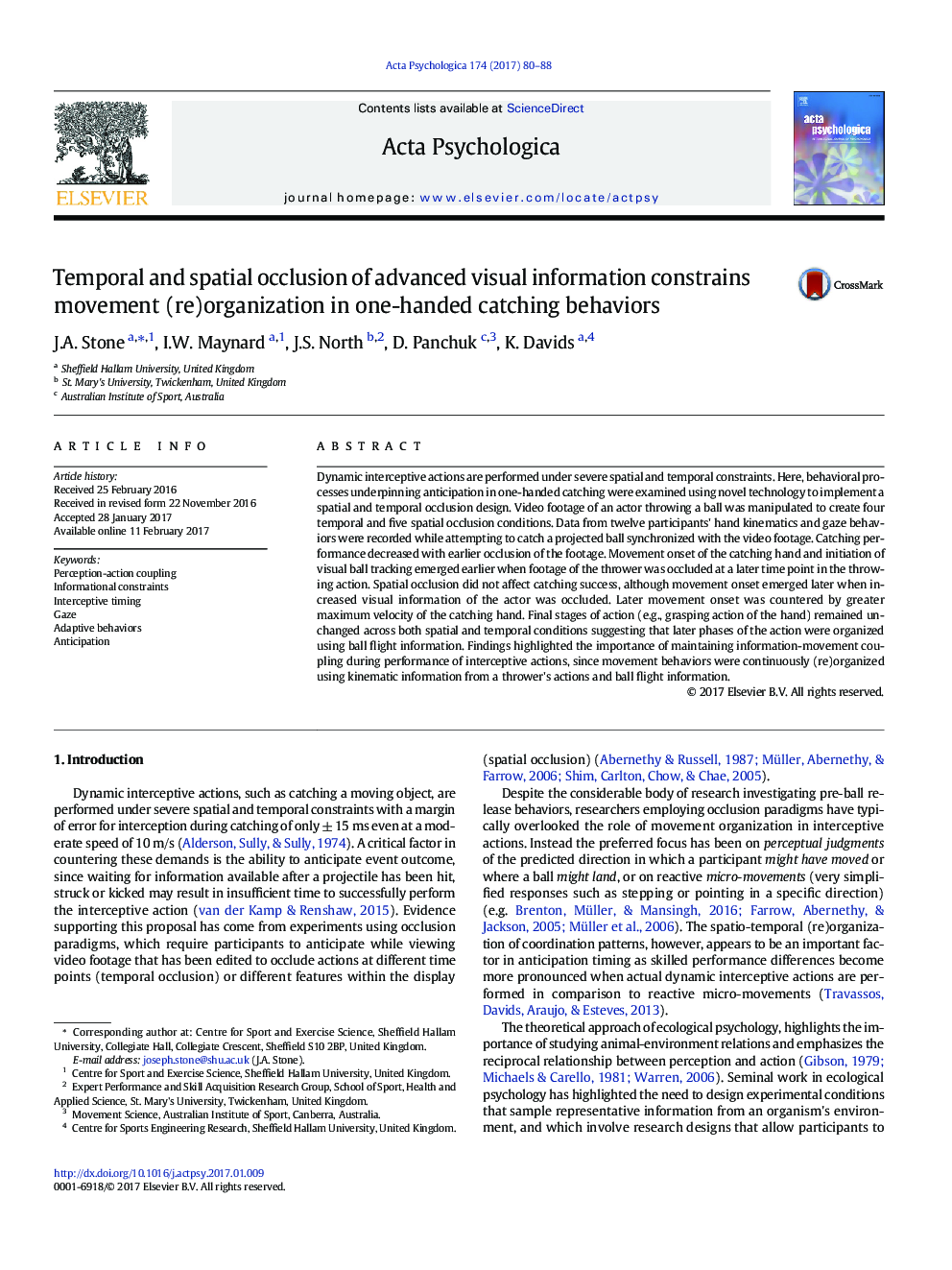| Article ID | Journal | Published Year | Pages | File Type |
|---|---|---|---|---|
| 5040243 | Acta Psychologica | 2017 | 9 Pages |
â¢Participants made fewer successful catches when footage was occluded earlier.â¢Early stages of catching actions were affected by temporal and spatial occlusion.â¢Later stages of catching actions were unaffected by temporal and spatial occlusion.â¢Actions were continually (re)organized using kinematic and ball flight information.
Dynamic interceptive actions are performed under severe spatial and temporal constraints. Here, behavioral processes underpinning anticipation in one-handed catching were examined using novel technology to implement a spatial and temporal occlusion design. Video footage of an actor throwing a ball was manipulated to create four temporal and five spatial occlusion conditions. Data from twelve participants' hand kinematics and gaze behaviors were recorded while attempting to catch a projected ball synchronized with the video footage. Catching performance decreased with earlier occlusion of the footage. Movement onset of the catching hand and initiation of visual ball tracking emerged earlier when footage of the thrower was occluded at a later time point in the throwing action. Spatial occlusion did not affect catching success, although movement onset emerged later when increased visual information of the actor was occluded. Later movement onset was countered by greater maximum velocity of the catching hand. Final stages of action (e.g., grasping action of the hand) remained unchanged across both spatial and temporal conditions suggesting that later phases of the action were organized using ball flight information. Findings highlighted the importance of maintaining information-movement coupling during performance of interceptive actions, since movement behaviors were continuously (re)organized using kinematic information from a thrower's actions and ball flight information.
